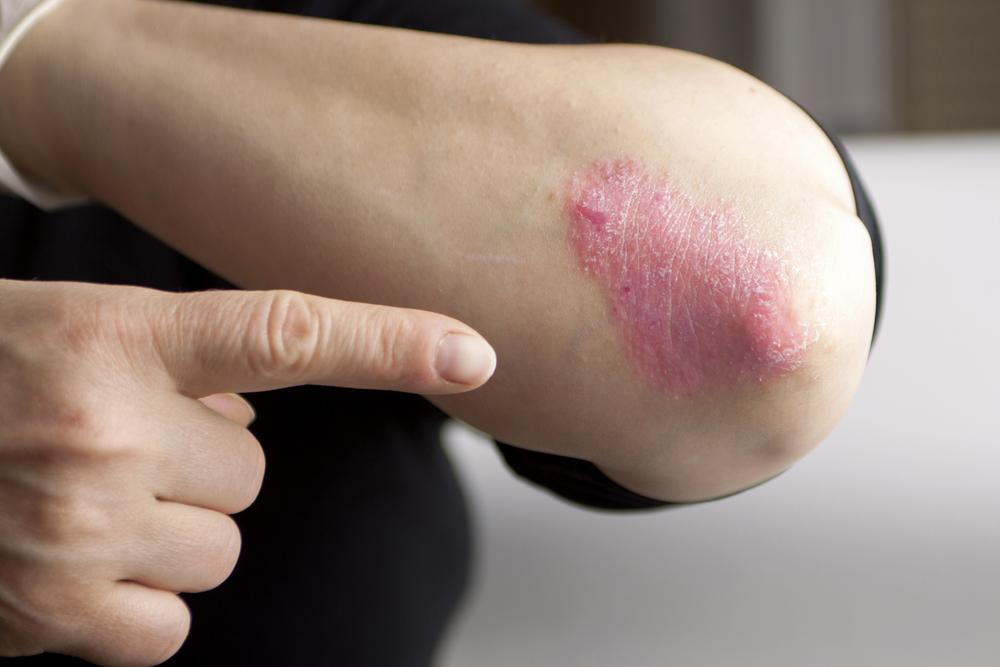Comprehensive Guide to Psoriasis: Causes, Symptoms, and Effective Management Strategies
This comprehensive guide provides an in-depth understanding of psoriasis, covering its causes, various types, and the latest treatment options. Learn how to identify symptoms, understand risk factors, and manage this chronic skin condition effectively. With insights into medical therapies and lifestyle adjustments, patients can better control psoriasis and improve their quality of life. Early diagnosis and personalized care are key to long-term management, and this article aims to equip individuals with essential knowledge to navigate their condition confidently.

Understanding Psoriasis: Causes, Types, and Treatments
What Is Psoriasis? An In-Depth Explanation
Psoriasis is a chronic, immune-mediated skin condition that impacts millions worldwide. It manifests primarily through the formation of red, inflamed patches covered with silvery-white scales, often causing discomfort, itching, and aesthetic concerns. While it is not contagious, psoriasis is considered an autoimmune disorder with strong genetic links, making it a complex disease with various triggers and manifestations. The condition predominantly develops beneath the skin's surface, involving an accelerated skin cell lifecycle that results in rapid buildup of cells on the epidermis. This overproduction leads to the characteristic plaques associated with psoriasis, which can appear on various parts of the body.
The global prevalence of psoriasis is significant, affecting over 130 million individuals across different continents. In the United States alone, approximately 7.5 million people live with the condition, with equal representation among men and women. Research indicates a higher incidence among Caucasians, but psoriasis can affect people of any ethnicity. The disease does not discriminate based on age, often appearing in early adulthood but also affecting older populations. Importantly, psoriasis isn’t merely a skin disorder; it’s associated with systemic health complications such as cardiovascular diseases, metabolic syndrome, type 2 diabetes, and joint inflammation, specifically psoriatic arthritis. Notably, about 15% of psoriasis patients are diagnosed with psoriatic arthritis, which can cause joint pain, swelling, morning stiffness, and reduced mobility.
Though there is currently no cure for psoriasis, numerous treatments are available to manage symptoms effectively. Researchers are continually exploring new therapies aimed at targeting the immune system and modulating inflammation. Whether through topical medications, phototherapy, systemic drugs, or biologic treatments, patients can find relief and improve their quality of life. Early diagnosis and a comprehensive treatment plan tailored to individual needs are crucial for controlling the progression of the disease.
Different Types of Psoriasis and How They Present
Psoriasis exhibits various forms, each with distinct features, affected areas, and severity levels. Recognizing these differences is essential for accurate diagnosis and effective treatment. Here, we explore the primary types of psoriasis to help you understand this complex condition better.
Plaque Psoriasis (Vulgaris): This is the most common form, accounting for approximately 80-90% of cases. It appears as raised, well-defined red patches covered with a silvery, flaky scale. These plaques often develop on the scalp, elbows, knees, and lower back but can appear anywhere on the skin. Patients may experience itching, soreness, and occasionally pain if the lesions crack or become infected. The severity varies from small patches to extensive coverage affecting large areas of the body.
Inverse or Flexural Psoriasis: This variant occurs in skin folds and areas with close contact, such as the groin, around the breast, armpits, and behind the knees. The lesions are typically shiny, smooth, and less scaly due to the moist environment of folds. Because of the location, these patches can cause discomfort, irritation, and chafing, especially during sweating or friction.
Erythrodermic Psoriasis: A rare but life-threatening form, erythrodermic psoriasis involves widespread redness, inflammation, and scaling across large portions of skin. It may cover most of the body's surface and is accompanied by severe pain, itching, malaise, and fever. This type requires urgent medical attention as it can lead to dehydration, electrolyte imbalance, and infection.
Pustular Psoriasis: Characterized by white pustules (blisters filled with non-infectious pus) on reddish, inflamed skin, pustular psoriasis affects small areas like the palms and soles or can be more extensive. Symptoms include fever, chills, fatigue, and muscle weakness, often indicating a severe systemic response. This form can be triggered by sudden withdrawal of corticosteroids or infections.
Guttate Psoriasis: Often triggered by infections such as streptococcal throat infection, guttate psoriasis presents as small, drop-shaped lesions that appear suddenly and can spread rapidly. It commonly affects children and young adults and may resolve spontaneously or persist as chronic plaques.
Nail Psoriasis: While not a separate subtype, nail psoriasis involves specific changes in fingernails or toenails. It leads to discoloration, pitting (small depressions), onycholysis (nail loosening), and thickening. Severe nail involvement can impair gripping ability and may sometimes be associated with psoriatic arthritis.
Understanding Causes and Risk Factors
The exact cause of psoriasis remains elusive, but it is widely regarded as an autoimmune disorder where the immune system mistakenly attacks healthy skin cells. This immune response results in rapid skin cell production, inflammation, and abnormal skin buildup. Several factors influence the development and severity of psoriasis, including genetic predisposition, environmental triggers, lifestyle choices, and concurrent health conditions.
Genetics play a significant role, with over 60% of patients having a family history of the disease. Specific genes related to immune regulation have been identified, indicating a hereditary component. Environmental factors also contribute to disease onset and flare-ups, including stress, skin injuries (koebnerization), infections, certain medications, smoking, and excessive alcohol consumption. Climate conditions such as cold, dry weather can exacerbate symptoms, while sunlight exposure may provide some relief in mild cases.
Understanding these factors allows patients and healthcare professionals to develop personalized management strategies to minimize triggers and control symptoms effectively.
Diagnosis and Treatment Options for Psoriasis
Diagnosis primarily relies on a thorough physical examination by a healthcare provider familiar with psoriasis. The doctor will assess the appearance, distribution, and progression of lesions and may perform skin or nail biopsies for definitive confirmation. Additionally, blood tests and X-rays may be necessary to evaluate associated conditions like psoriatic arthritis.
Management strategies for psoriasis encompass a wide range of options, tailored to disease severity, affected areas, and patient preferences. These include:
Topical Treatments: Corticosteroid creams and ointments reduce inflammation and itching. Other topical agents include vitamin D analogs, coal tar, salicylic acid, and moisturizers.
Phototherapy: Controlled exposure to ultraviolet (UV) light can decrease skin inflammation and slow skin cell growth. Types include UVB broadband and narrowband therapy.
Systemic Medications: For moderate to severe cases, oral or injectable drugs such as methotrexate, cyclosporine, or acitretin are prescribed to suppress immune activity.
Biologic Therapies: These advanced treatments target specific immune system pathways involved in psoriasis. Examples include TNF-alpha inhibitors, IL-17 and IL-23 inhibitors. They are highly effective for patients with severe or refractory disease but require monitoring for side effects.
Alongside medical treatments, lifestyle modifications such as stress management, maintaining a healthy weight, avoiding known triggers, and skincare routines are vital for optimal control of psoriasis.
Living with Psoriasis: Coping and Support
Living with psoriasis can be challenging, affecting both physical comfort and emotional well-being. Patients often encounter issues related to self-esteem, social stigma, and frustration over the chronic nature of the disease. Support groups, counseling, and patient education play crucial roles in helping individuals cope with their condition effectively. Adopting a healthy lifestyle, avoiding triggers, and adhering to treatment regimens are essential components of managing psoriasis long-term.
If you suspect you have psoriasis or are experiencing symptoms, consult a healthcare professional promptly to obtain a proper diagnosis and tailored treatment plan. Advances in dermatology continue to improve the quality of life for those affected by this chronic skin condition.





